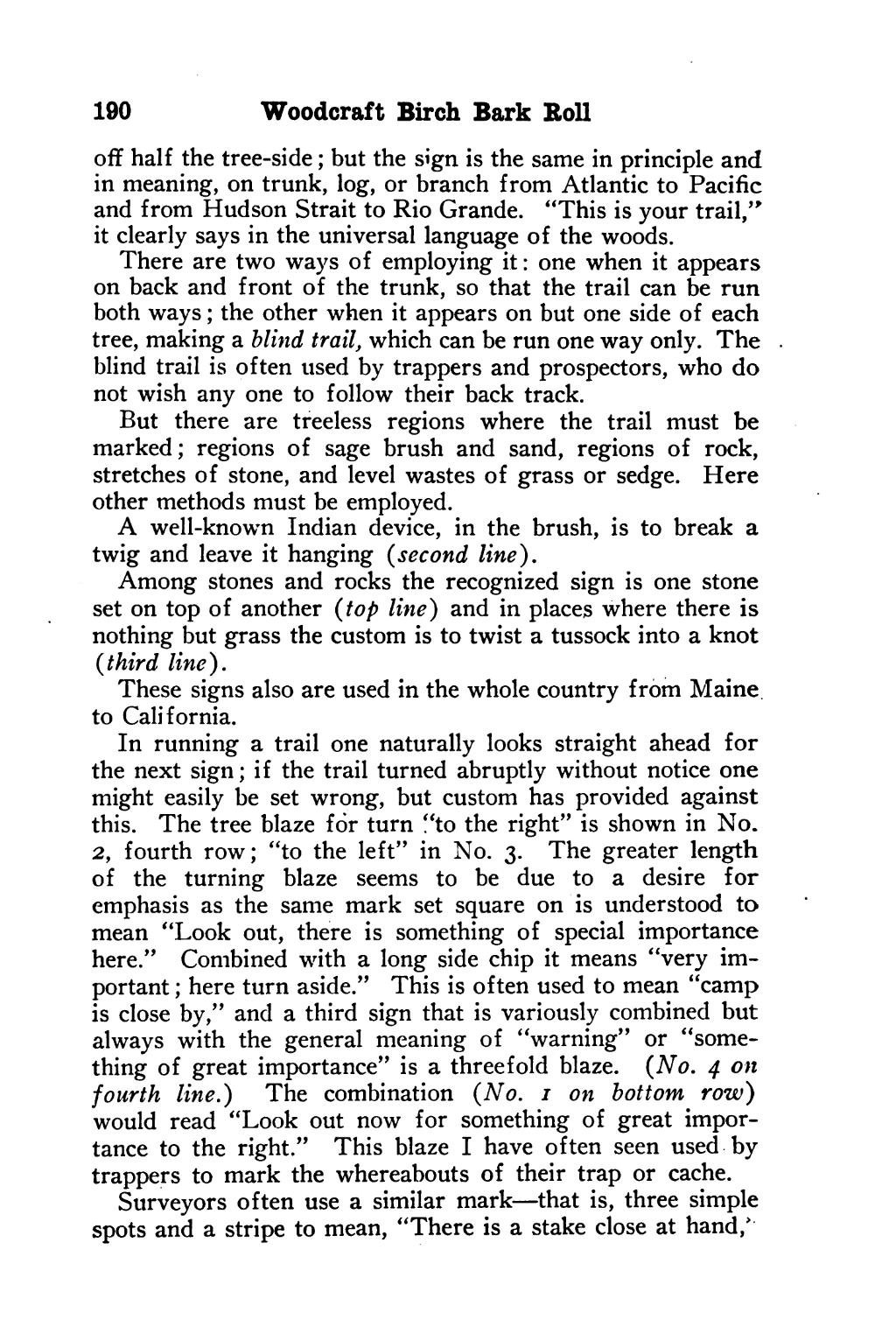190 Woodcraft Birch Bark Roll off half the tree-side ; but the sign is the same in principle and in meaning, on trunk, log, or branch from Atlantic to Pacific and from Hudson Strait to Rio Grande. “This is your trail,’ it clearly says in the universal language of the woods. There are two ways of employing it: one when it appears on back and front of the trunk, so that the trail can be run both ways; the other when it appears on but one side of each tree, making a blind trail, which can be run one way only. The blind trail is often used by trappers and prospectors, who do not wish any one to follow their back track. But there are treeless regions where the trail must be marked; regions of sage brush and sand, regions of rock, stretches of stone, and level wastes of grass or sedge. Here other methods must be employed. A well-known Indian device, in the brush, is to break a twig and leave it hanging (second line). Among stones and rocks the recognized sign is one stone set on top of another (top line) and in places where there is nothing but grass the custom is to twist a tussock into a knot (third line). These signs also are used in the whole country from Maine. to California. In running a trail one naturally looks straight ahead for the next sign; if the trail turned abruptly without notice one might easily be set wrong, but custom has provided against this. The tree blaze for turn ‘‘to the right” is shown in No. 2, fourth row; “to the left” in No. 3. The greater length of the turning blaze seems to be due to a desire for emphasis as the same mark set square on is understood to mean ‘‘Look out, there is something of special importance here.” Combined with a long side chip it means “very 1m- portant ; here turn aside.” This is often used to mean “camp is close by,” and a third sign that is variously combined but always with the general meaning of “warning” or “some- thing of great importance” is a threefold blaze. (No. 4 on fourth line.) The combination (No. 1 on bottom row) would read “Look out now for something of great impor- tance to the right.” This blaze I have often seen used. by trappers to mark the whereabouts of their trap or cache. Surveyors often use a similar mark—that is, three simple spots and a stripe to mean, “There is a stake close at hand,”
Stránka:roll 1931.djvu/206
Z thewoodcraft.org
Tato stránka nebyla zkontrolována
